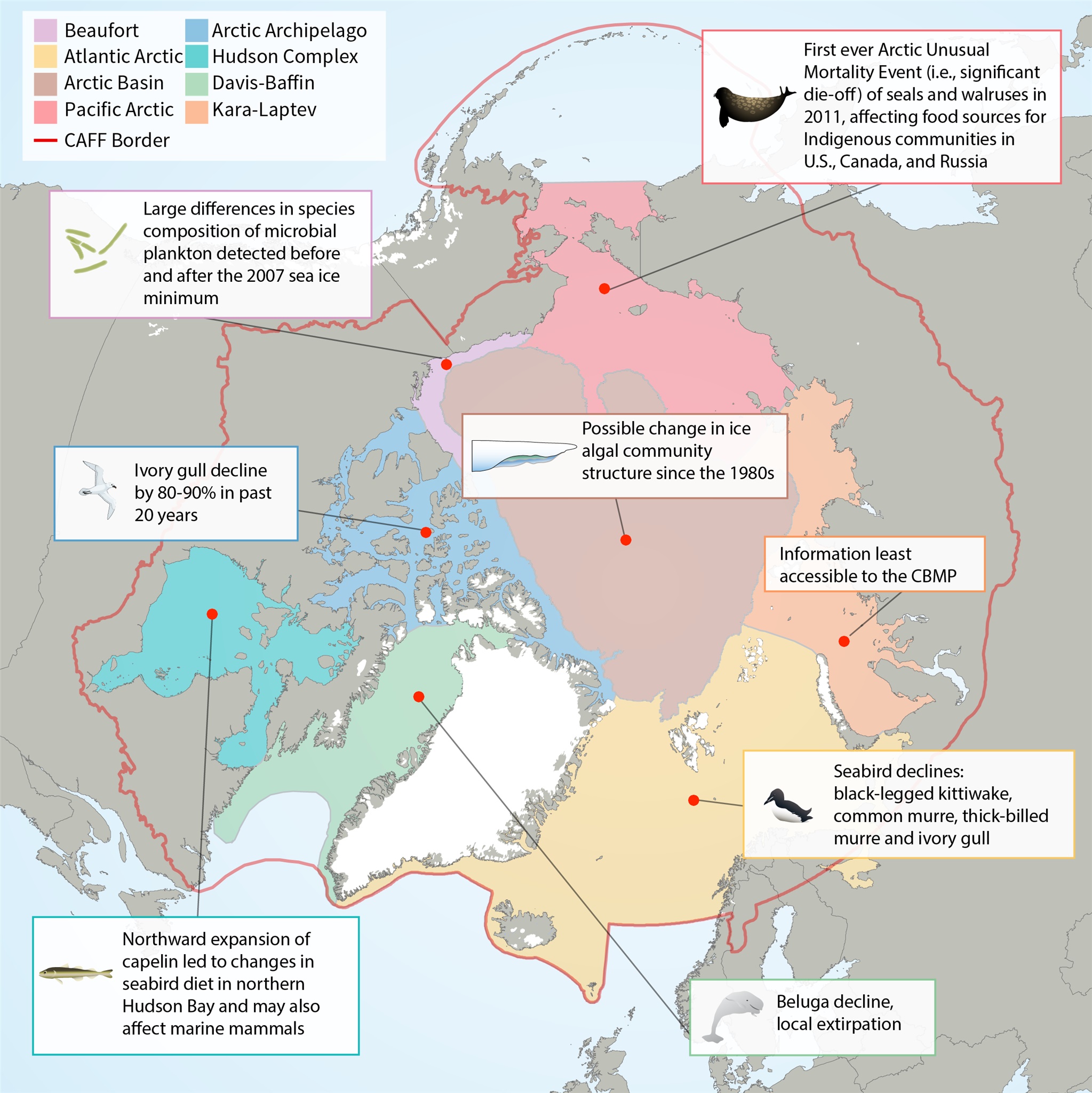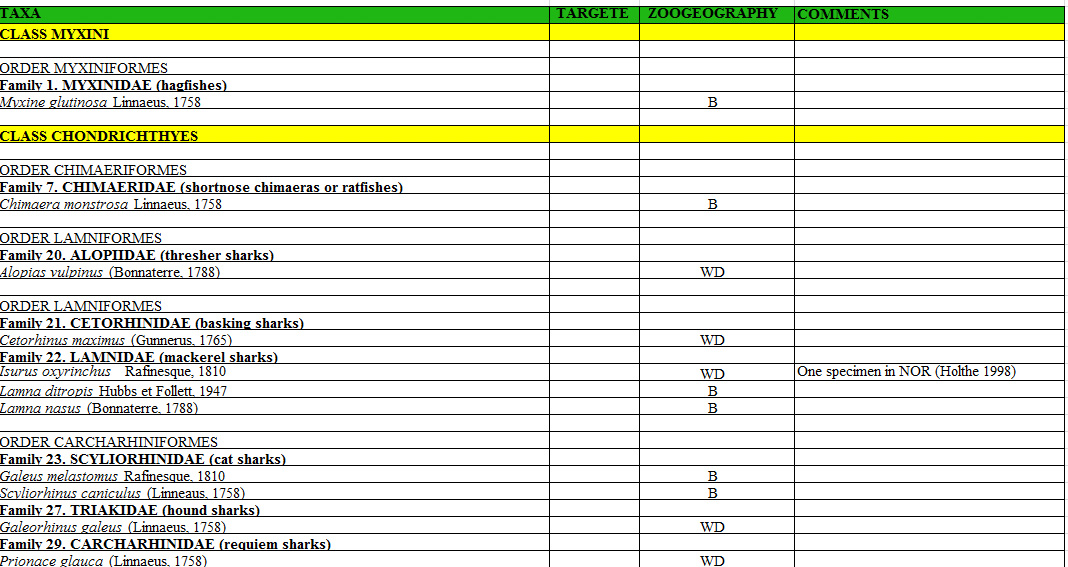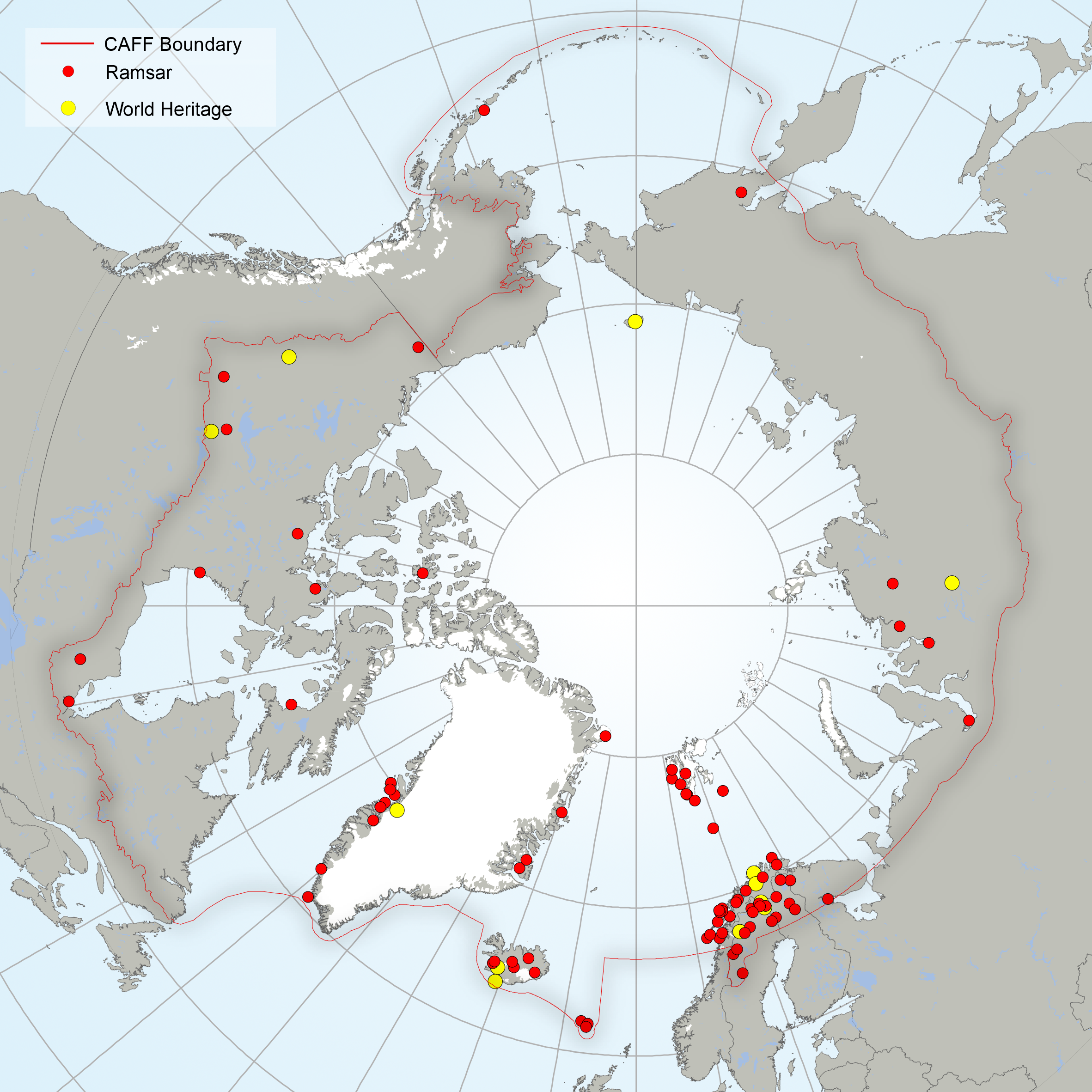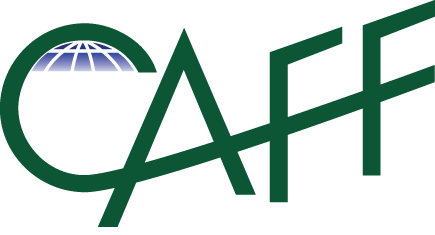boundaries
Type of resources
Available actions
Topics
Keywords
Contact for the resource
Provided by
Years
Formats
Representation types
Update frequencies
status
Scale
-

Map of Arctic Marine Areas as defined by the Circumpolar Biodiversity Monitoring Program (CBMP), with one sample finding from each area.
-

Locations and associated attributes of circumpolar Muskox studies. Attributes include animal count, population estimate, estimate error and associated report citation.
-
Appendix 9.7 Species list with full names of liverworts of Greenland according to Damsholt (2010, unpublished) including 22 families, 50 genera and 173 species.
-
Appendix 17.3. Phylogeographic and population genetics studies of selected Arctic species.
-
Appenidx 17.1. Selected phylogenetic studies of (or including) Arctic taxa.
-
Appendix 9.3 Borderline vascular plant species (“b”) with indication of PAF code number, reaching the southernmost part of the Arctic subzone E. Arctic floristic provinces, subzones (A-E), neighbouring boreal or boreo-alpine zone (N) derived from Elven (2007).
-
Appendix 9.6 Species list of liverworts of Svalbard (Frisvoll & Elvebakk 1996) with nomenclature of families after Damsholt (2002).
-

Marine fishes in the Arctic Ocean and adjacent seas (AOAS).
-

Within the CAFF boundary there are 92 protected areas recognised under global international conventions. These include 12 World Heritage sites3 (three of which have a marine component) and 80 Ramsar sites, which together cover 0.9% (289,931 km2) of the CAFF area (Fig. 4). Between 1985 and 2015, the total area covered by Ramsar sites4 almost doubled, while the total area designated as World Heritage sites increased by about 50% in the same time period (Fig. 5). ARCTIC PROTECTED AREAS - INDICATOR REPORT 2017
-

The Conservation of Arctic Flora and Fauna (CAFF) and Protection of the Arctic Marine Environments (PAME) working groups of the Arctic Council developed this indicator report. It provides an overview of the status and trends of protected areas in the Arctic. The data used represents the results of the 2016 update to the Protected Areas Database submitted by each of the Arctic Council member states (Annex 1). This report uses the International Union for the Conservation of Nature (IUCN) definition for protected areas (see Box 1) which includes a wide range of Management Categories – from strict nature reserve to protection with sustainable use. Consequently, the level of protection and governance of these areas varies throughout the circumpolar region and its countries.
 CAFF - Arctic Biodiversity Data Service (ABDS)
CAFF - Arctic Biodiversity Data Service (ABDS)